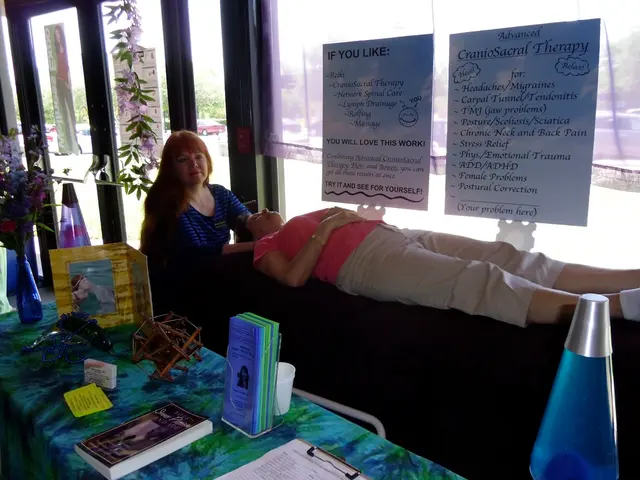Fast-Paced Walking Techniques for Enhanced Fat Burning, Recommended After Reaching Age 50
In the pursuit of an efficient and effective fitness routine, walking may just be the unsung hero. Recent studies have shown that walking, when done correctly, can be as effective as running for burning calories, boosting metabolism, and melting stubborn fat. Here are five smart walking techniques that can help you maximise your fat-burning potential and build muscle.
1. **Criss-Cross Walking** This technique, also known as diagonal walking, involves crossing one foot diagonally in front of the other as you walk, creating an “X” pattern. It strengthens the hip adductors and abductors, quads, and calves, improving hip mobility, balance, and overall coordination. To do it, stand with feet hip-width apart, lift your right foot and cross it in front of the left, then alternate. Engage your core and buttock muscles for best results.
2. **Brisk Walking** Walking at a brisk pace where talking is possible but slightly challenging maximises fat burning. Incorporating inclines like hills or treadmill inclines can further boost calorie burn, making it a low-impact, joint-friendly exercise that controls stress hormone levels and encourages consistency.
3. **Take Shorter, Quicker Steps** Instead of long strides, taking short, quick steps reduces joint stress and improves your walking speed and efficiency. Stepping directly beneath you helps you roll through the middle of your foot and push off your toes, enhancing your stride.
4. **Swing Your Arms Straight** Swinging your arms straight back to near your hips and forward without crossing the body or going above chest height increases momentum and walking intensity, helping engage the upper body muscles and boosting overall calorie burn.
5. **Maintain Good Posture** Standing tall with an open chest, tight abs, and relaxed shoulders improves breathing and core engagement, which supports muscle building during walking. Good posture also makes your movement more efficient and sustainable.
By incorporating these techniques, walking becomes an effective tool not just for fat burning but also for building muscle and improving overall fitness.
For those over 50, walking smarter may be a more effective long-term strategy compared to running. Using an incline during walking increases heart rate and muscle recruitment, especially in the glutes and hamstrings. Adding elevation to a walk can be done outdoors or on a treadmill, and intervals or steady climbs are beneficial.
Adding functional movements to walks can increase resting metabolism, making the body burn more calories even when at rest. Performing 10 bodyweight squats, 10 standing knee raises, 10 wall or bench push-ups, 10 reverse lunges or step-ups on a curb during a walk can elevate the workout to a full-body fat-burning routine.
To master efficient movement, focus on upright posture, engaging the core, pushing off the ground with each step, and using arm drive. Walking with poor mechanics wastes energy and hinders fat burning. Streamlined, efficient walking increases calorie burn.
Bent elbows swinging naturally during walking can increase calorie expenditure by up to 15 percent. Using a stopwatch or walking app with audio cues can help with controlled pacing during interval walks.
So, lace up those shoes and hit the pavement (or treadmill) with these smart walking techniques. Walking may just be the key to unlocking your fitness goals.
- Incorporating techniques such as Criss-Cross Walking, Brisk Walking, and taking Shorter, Quicker Steps can make walking a very effective fat-burning and muscle-building activity.
- Walking smarter, especially for individuals over 50, may be a more sustainable strategy for long-term weight loss compared to running. This can be achieved by adding inclines and functional movements to walks.
- Maintaining good posture while walking is crucial for efficient movement and improved fitness. This includes standing tall with an open chest, tight abs, and relaxed shoulders.
- Adding audio cues from a walking app can help maintain a controlled pace during interval walks, potentially increasing calorie expenditure by up to 15 percent. By following these strategies, walking can be a key component in achieving your health-and-wellness and fitness-and-exercise goals.




